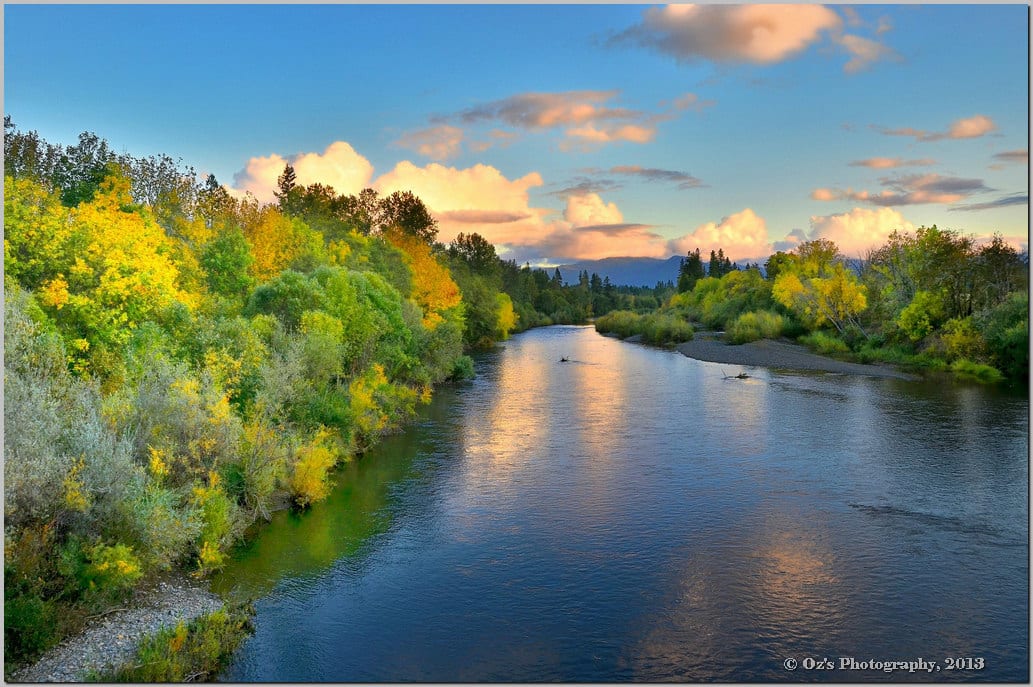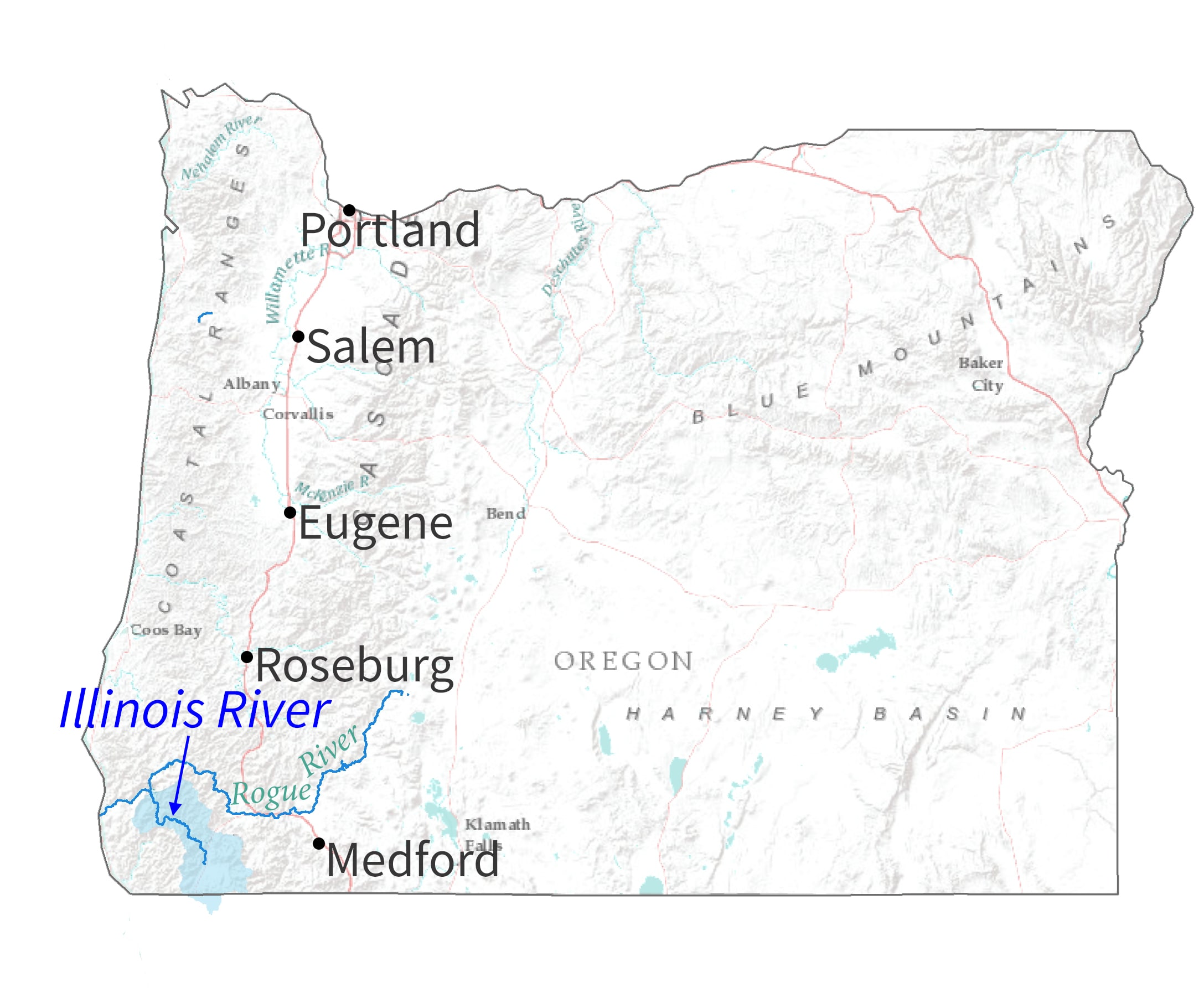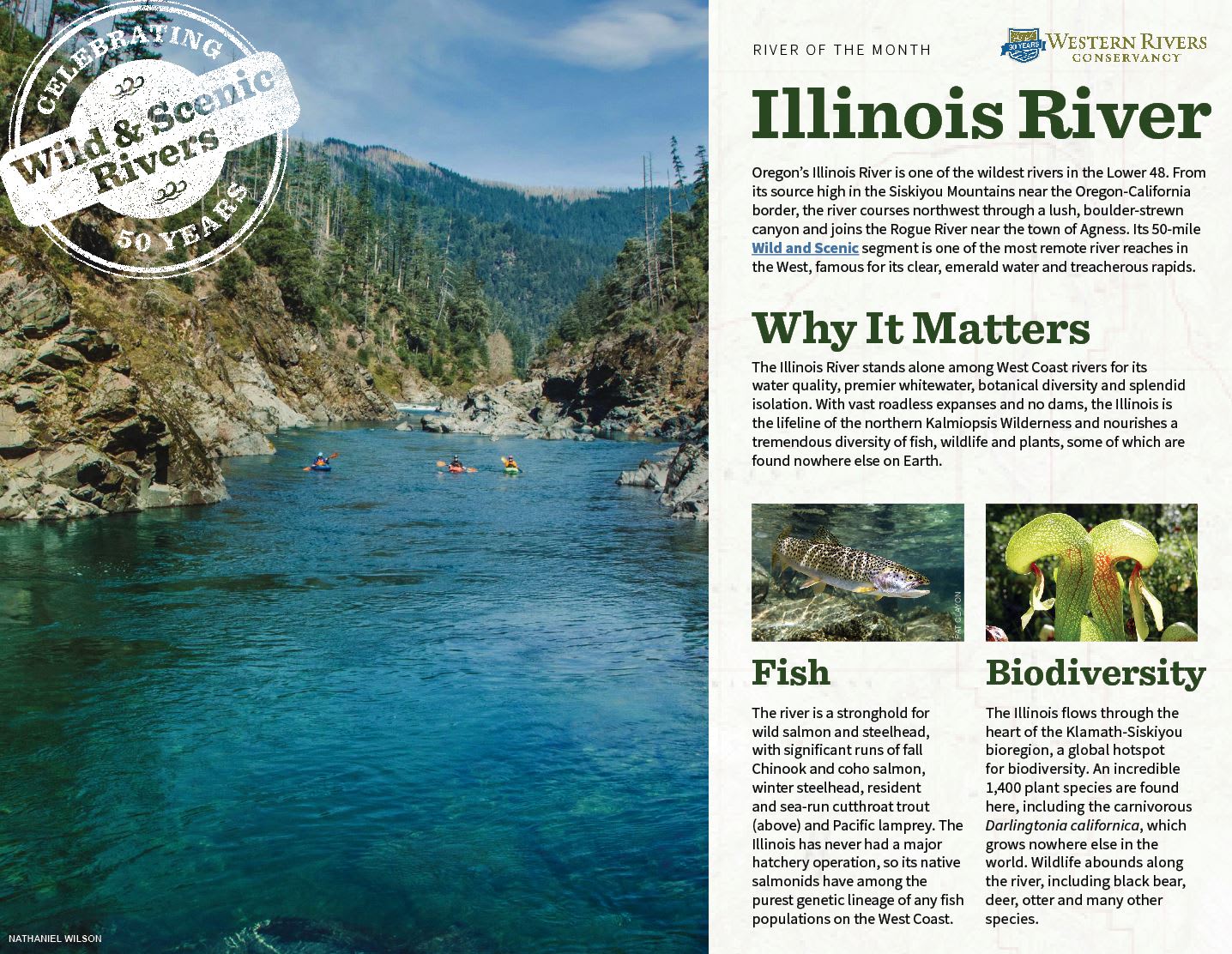
Fish
The river is a stronghold for wild salmon and steelhead, with significant runs of fall Chinook and coho salmon, winter steelhead, resident and sea-run cutthroat trout (above) and Pacific lamprey. The Illinois has never had a major hatchery operation, so its native salmonids have among the purest genetic lineage of any fish populations on the West Coast.

Wildlife
The Illinois flows through the heart of the Klamath-Siskiyou bioregion, a global hotspot for biodiversity. An incredible 1,400 plant species are found here, including the carnivorous Darlingtonia californica, which grows nowhere else in the world. Wildlife abounds along the river, including black bear, deer, otter and many other species.
-
Paddle
The Illinois is legendary on the West Coast for its extreme whitewater and total isolation. The four-day, 31-mile, expert-only wilderness run from Miami Bar to Oak Flat features 150 rapids, many of them Class-IV and one legendary Class-V drop: the Green Wall. Outfitters include Momentum River Expeditions,Northwest Rafting Company and ARTA River Trips.
-
Hike
One of the most magnificent hikes in the region is the challenging Illinois River Trail, which traces 28 miles of the river, bisects the Kalmiopsis Wilderness and delivers awesome views of the canyon, wildlife and wildflowers. Campsites lie along the trail, and day hikes are possible.
-
Fish
While access isn’t easy, the Illinois can reward anglers with big winter steelhead, summer “half-pounders” and the chance to have a wild stretch of river all to themselves. Access is good via the Illinois River Trail or from Illinois River Road, outside Selma. Wild trout can be caught in the upper river. Artificial flies and lures only; catch and release.
The WRC Story
Western Rivers Conservancy has taken major steps to protect the Illinois River’s wild beauty and its clean, cold headwaters. In 2003, WRC acquired 871 acres along the Illinois River near its confluence with the Rogue, protecting a vital stretch of the Wild and Scenic River corridor. Then, in 2006, WRC bought an 870-acre ranch along Deer Creek, the largest source of cold, clean water for the Illinois. In 2008, we conveyed the property, along with its ranch house, to the Siskiyou Field Institute as a permanent home for its educational and research programs. Situated amidst rare biological diversity, the property now provides a one-of-a-kind classroom for people to explore the wonders of the Klamath-Siskiyou region.


Best Time of Year
- Trout fishing
- After Spring runoff
- Steelhead
- Dec-Mar
- Boating
- Apr-May


